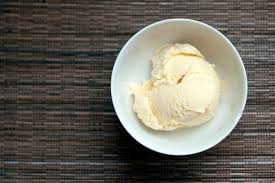Exploring the Health Benefits of Acai Puree
The Benefits of Acai Puree
Acai puree, derived from the acai berry, is a popular superfood known for its numerous health benefits. This dark purple fruit is native to the Amazon rainforest and has gained popularity worldwide due to its rich nutrient content and antioxidant properties.
One of the key benefits of acai puree is its high antioxidant levels. Antioxidants help protect the body against oxidative stress and inflammation, which can contribute to various chronic diseases. Acai berries are particularly rich in anthocyanins, which give them their deep purple color and have been linked to improved heart health and reduced inflammation.
In addition to antioxidants, acai puree is also a good source of fiber, healthy fats, and essential nutrients such as vitamin C, vitamin A, calcium, and iron. These nutrients support overall health and well-being by boosting immunity, promoting healthy digestion, and providing energy.
Many people enjoy incorporating acai puree into their diet by adding it to smoothies, bowls, or desserts. Its naturally sweet flavor makes it a delicious addition to various recipes while providing a nutritional boost.
Overall, acai puree is a versatile and nutritious ingredient that can enhance your diet and support your health goals. Consider adding this superfood to your routine for a tasty and beneficial dietary addition!
5 Creative Ways to Enjoy Acai Puree Every Day
- Add acai puree to your smoothie bowls for a boost of antioxidants.
- Mix acai puree with yogurt and granola for a delicious and nutritious breakfast.
- Blend acai puree with banana and almond milk for a refreshing and energizing smoothie.
- Use acai puree as a topping for oatmeal or chia pudding to enhance the flavor and nutrition.
- Experiment with adding acai puree to homemade popsicles or ice cream for a tasty treat.
Add acai puree to your smoothie bowls for a boost of antioxidants.
Enhance the nutritional value of your smoothie bowls by incorporating acai puree, a powerhouse of antioxidants. By adding acai puree to your favorite smoothie bowl recipes, you can elevate both the flavor and health benefits of your meal. This vibrant purple puree not only lends a deliciously sweet taste but also provides a concentrated dose of antioxidants that can help protect your body against oxidative stress and inflammation. Give your smoothie bowls an antioxidant-rich boost with the addition of acai puree and enjoy a nutritious and flavorful treat!
Mix acai puree with yogurt and granola for a delicious and nutritious breakfast.
For a delightful and nourishing breakfast option, try mixing acai puree with yogurt and granola. This combination offers a perfect balance of flavors and textures, creating a satisfying meal that is both delicious and nutritious. The creamy yogurt complements the rich acai puree, while the crunchy granola adds a delightful crunch. This breakfast idea is not only tasty but also packed with antioxidants, fiber, and essential nutrients to kickstart your day on a healthy note. Give this simple yet flavorful breakfast bowl a try for a refreshing start to your morning routine!
Blend acai puree with banana and almond milk for a refreshing and energizing smoothie.
Blend acai puree with banana and almond milk for a refreshing and energizing smoothie. This delicious combination not only provides a burst of flavor but also offers a nutritious boost to start your day or refuel after a workout. The acai puree adds antioxidant benefits, the banana contributes natural sweetness and potassium, while the almond milk provides a creamy texture and healthy fats. This smoothie is a perfect way to enjoy the benefits of acai while treating yourself to a satisfying and nourishing drink.
Use acai puree as a topping for oatmeal or chia pudding to enhance the flavor and nutrition.
Enhance your breakfast routine by using acai puree as a delicious and nutritious topping for oatmeal or chia pudding. The rich antioxidant content of acai puree not only adds a burst of flavor but also boosts the nutritional value of your morning meal. Simply drizzle the vibrant purple puree over your bowl of oatmeal or chia pudding to enjoy a delightful combination of flavors while reaping the benefits of this superfood. Try this simple tip to elevate your breakfast experience and start your day on a healthy note!
Experiment with adding acai puree to homemade popsicles or ice cream for a tasty treat.
Experimenting with adding acai puree to homemade popsicles or ice cream can elevate your frozen treats to a whole new level of deliciousness. The rich and fruity flavor of acai pairs perfectly with the creamy texture of ice cream or the refreshing bite of a popsicle, creating a tasty and nutritious dessert option. By incorporating acai puree into your frozen creations, you can enjoy a guilt-free indulgence that not only satisfies your sweet tooth but also provides a boost of antioxidants and essential nutrients. Try this tip for a fun and flavorful way to enjoy the benefits of acai while treating yourself to a delightful treat.

